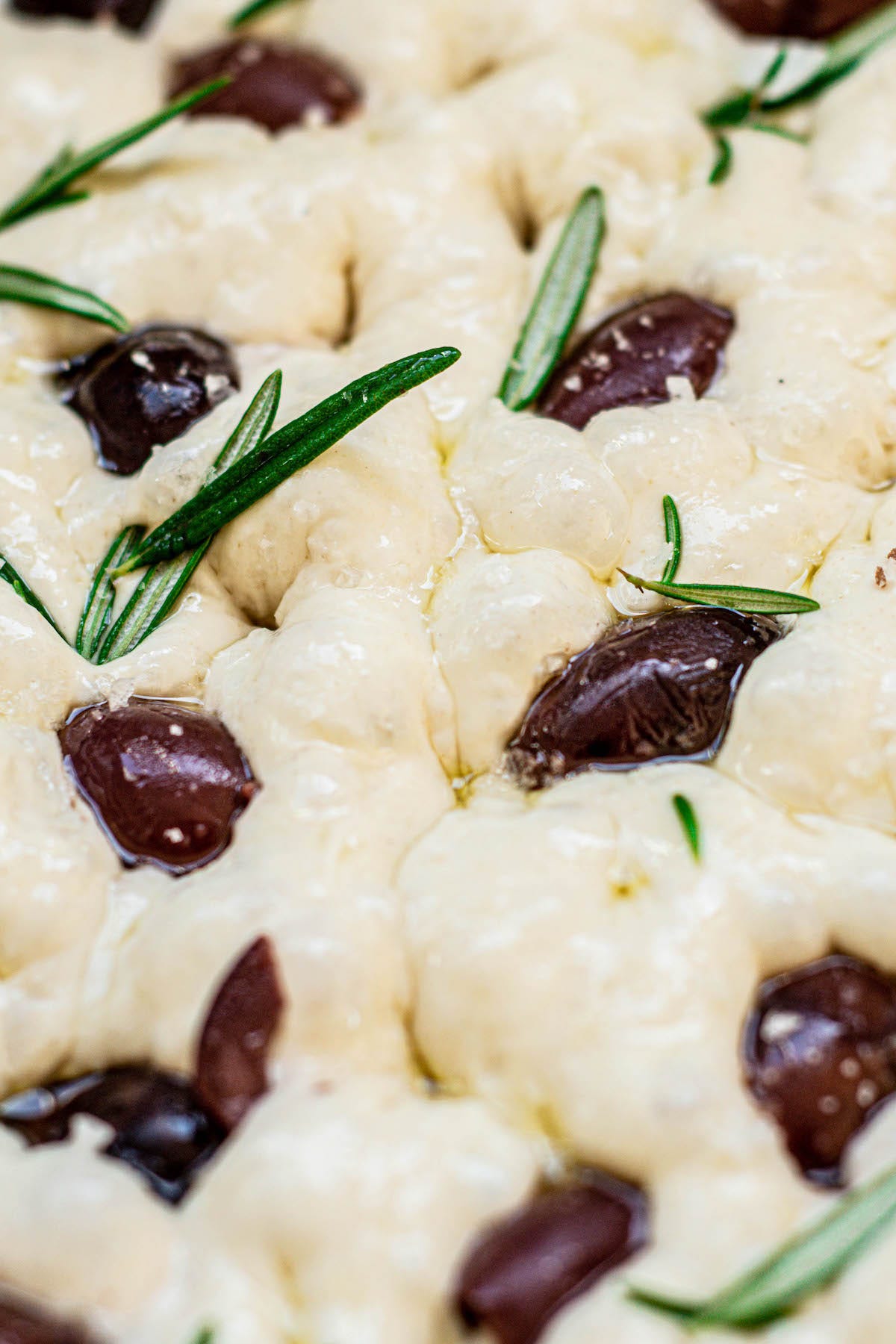The Best Focaccia
This focaccia bread tastes amazing and it’s so easy to make! The bread is light and airy with a golden crust.
If you’ve not made focaccia like this before, I urge you to give it a go! It’s the best bread to whip up when you don’t feel like kneading, or you don’t have much equipment. It’s all in one bowl, and no mixer needed. It’s a really wet dough, but don’t be alarmed by it. Instead of kneading, you’ll stretch and fold the dough over itself a few times over the first rising period. This is a great way to bring strength without making a doughy mess!
I’ve topped it with lots of fresh rosemary, kalamata olives, and flaky salt, but you could substitute them with many other ingredients. Sun-dried tomatoes, capers, cherry tomatoes, other fresh herbs, onions, garlic, or thinly sliced potatoes work well.
Today's focaccia uses commercial yeast, but you can make it with sourdough, too! I’ve got a recipe on my Home Grown Happiness blog for the sourdough version here.
No Knead Focaccia
You can also find the recipe with more step-by-step photos on Baking with Butter blog.
Ingredients
480g (2 cups) lukewarm water
7g (2 1/4 teaspoons or 1 sachet) instant or active dried yeast
560g (4 ½ cups*) all-purpose flour or bread flour
9g (1 ½ teaspoon) fine salt
*These are US cups. Note that they are smaller than metric-sized cups. For best results, use scales.
TOPPINGS
5-6 Tbsp olive oil
1/2 cup halved Kalamata olives
4-5 Tbsp fresh rosemary leaves
Flaky salt
In a large bowl, combine the yeast, lukewarm water, flour, and salt and mix them together with a wooden spoon or rubber spatula to create a well-combined, shaggy dough. If using active dried yeast, let it dissolve in the lukewarm water for 5 minutes before mixing it with the rest of the dough ingredients.
Leave it to sit for 15 minutes before applying four sets of stretch and folds spread out over about an hour, one set every 15 minutes (though this timing isn't set in stone, don't worry if it's less or more!). Use wet hands when doing this, or the dough will stick to you!
A stretch and fold method is when one side of the dough is stretched and pulled over itself. The bowl is then turned, and this move is repeated on the following side.
Continue stretching, folding, and turning the bowl until all sides have been folded. That is one set of stretches and folds. The first set of stretch and folds will be very shaggy, and the dough will rip easily. As the folds are carried out over the next while, the gluten structure is created, and the dough gains strength.Drizzle the bottom of a 9x13-inch pan with a generous glug of olive oil. You can also line the pan with parchment paper if you think your pan might stick. Transfer the dough to the oiled pan. Leave it to sit and rest for 5-10 minutes, then use oiled fingers to spread and stretch the dough out into the skillet. If the dough resists stretching out, give it a rest and try again in a few minutes.
Let the dough rise at room temperature for around 1-1.5 hours until it has just doubled and jiggles when the pan is shaken. How fast the dough rises will depend on the temperature. It's always best to watch the dough and not the clock. Don’t let it rise too much or the dough can become too fragile and deflate.
While the dough is rising, preheat the oven to 450°F/230°C.
Drizzle the remaining 2-3 tablespoons of olive oil over the focaccia, then use oiled fingers to create deep dimples in the dough, pushing down. Do this all over the bread.
Press the rosemary leaves and olives deeply into the dough and sprinkle over flaky salt.
Bake the focaccia for 25-30 minutes until puffed and deep golden brown and the bread pulls away from the edges of the pan. If the top starts browning too much on top, loosely cover the bread with aluminum foil.
Remove the focaccia from the oven and let it sit for 3-4 minutes. Carefully remove it from the pan, then let it cool further on a wire cooling rack before serving.





